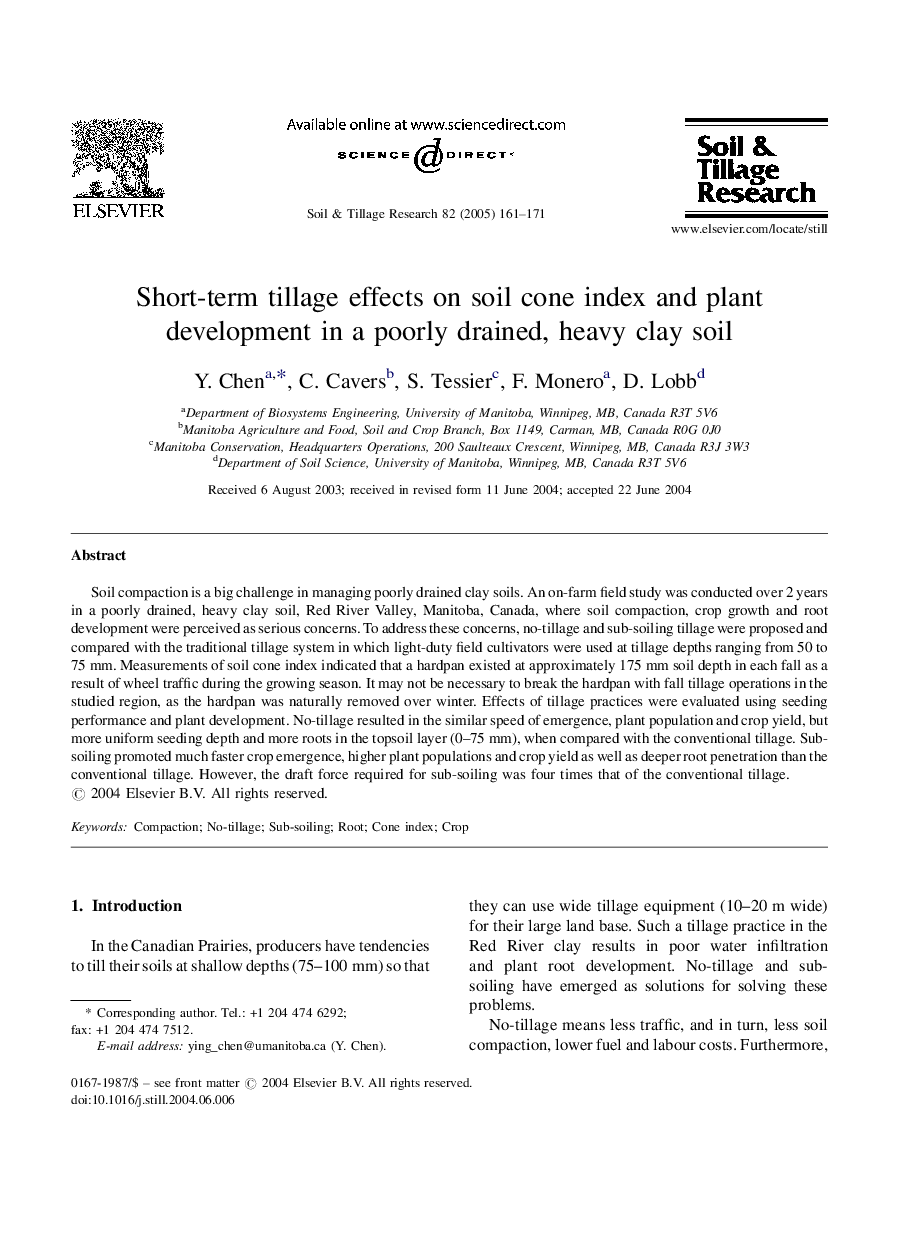| Article ID | Journal | Published Year | Pages | File Type |
|---|---|---|---|---|
| 10295250 | Soil and Tillage Research | 2005 | 11 Pages |
Abstract
Soil compaction is a big challenge in managing poorly drained clay soils. An on-farm field study was conducted over 2 years in a poorly drained, heavy clay soil, Red River Valley, Manitoba, Canada, where soil compaction, crop growth and root development were perceived as serious concerns. To address these concerns, no-tillage and sub-soiling tillage were proposed and compared with the traditional tillage system in which light-duty field cultivators were used at tillage depths ranging from 50 to 75Â mm. Measurements of soil cone index indicated that a hardpan existed at approximately 175Â mm soil depth in each fall as a result of wheel traffic during the growing season. It may not be necessary to break the hardpan with fall tillage operations in the studied region, as the hardpan was naturally removed over winter. Effects of tillage practices were evaluated using seeding performance and plant development. No-tillage resulted in the similar speed of emergence, plant population and crop yield, but more uniform seeding depth and more roots in the topsoil layer (0-75Â mm), when compared with the conventional tillage. Sub-soiling promoted much faster crop emergence, higher plant populations and crop yield as well as deeper root penetration than the conventional tillage. However, the draft force required for sub-soiling was four times that of the conventional tillage.
Related Topics
Physical Sciences and Engineering
Energy
Renewable Energy, Sustainability and the Environment
Authors
Y. Chen, C. Cavers, S. Tessier, F. Monero, D. Lobb,
